While AI has made significant strides, developing analytics solutions for enterprise management still demands deep expertise in both business operations and data science. These projects often involve long timelines, high costs, and, at times, underwhelming results.
We imagined a different approach ‒ one where teams no longer start from scratch. Instead, they select from a library of pre-built solutions that deliver over 80% of the required functionality. Each solution can be activated in days and then customized to fit the unique needs of the organization.
This is achieved with a rapid implementation method consisting of 4 steps:

The outcome: the ability to run your company with intelligence, not just data – without the wait.
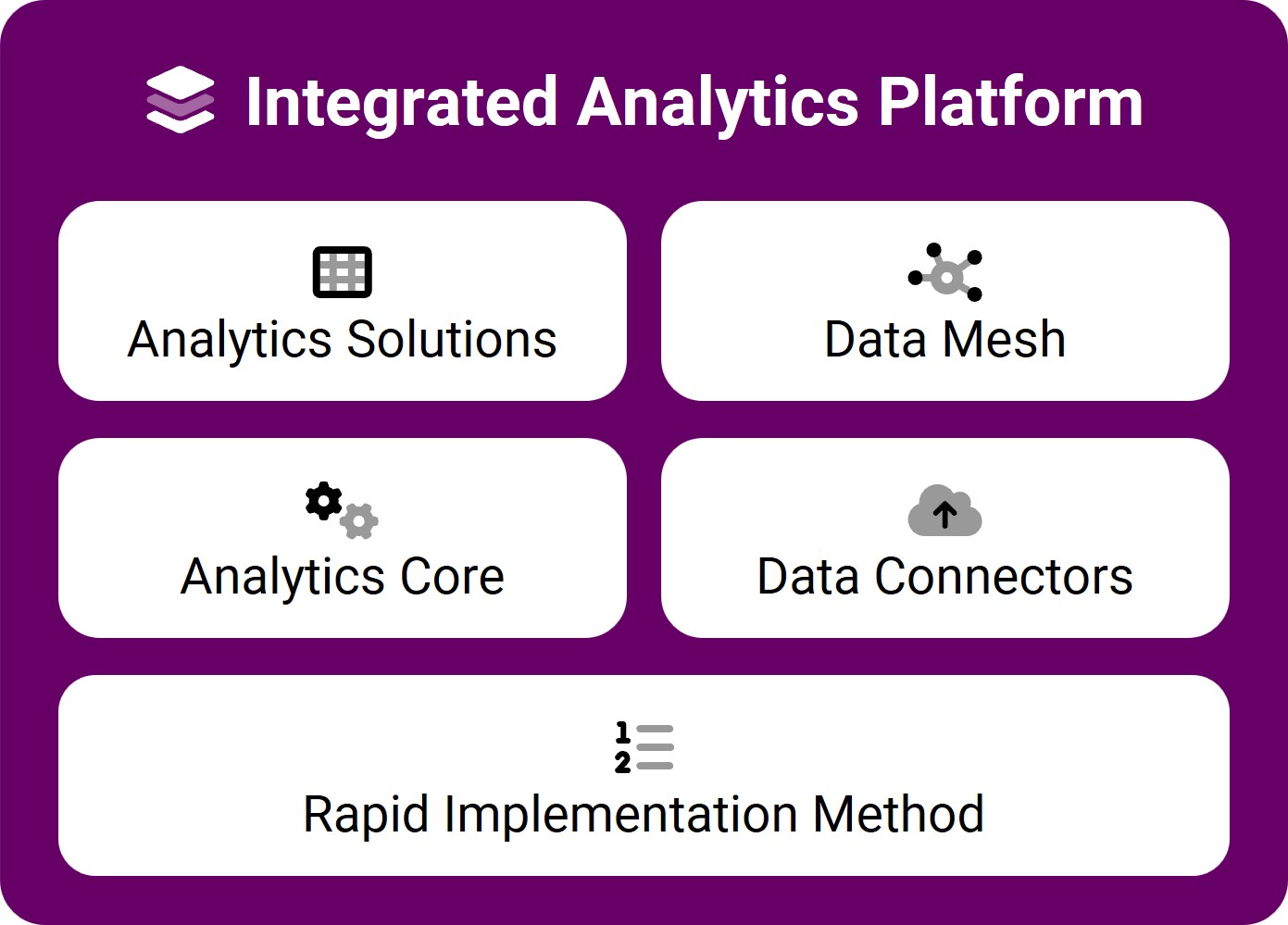
Built for Business Leaders – Not IT
Integrated Financial and Operational Intelligence in ONE Application
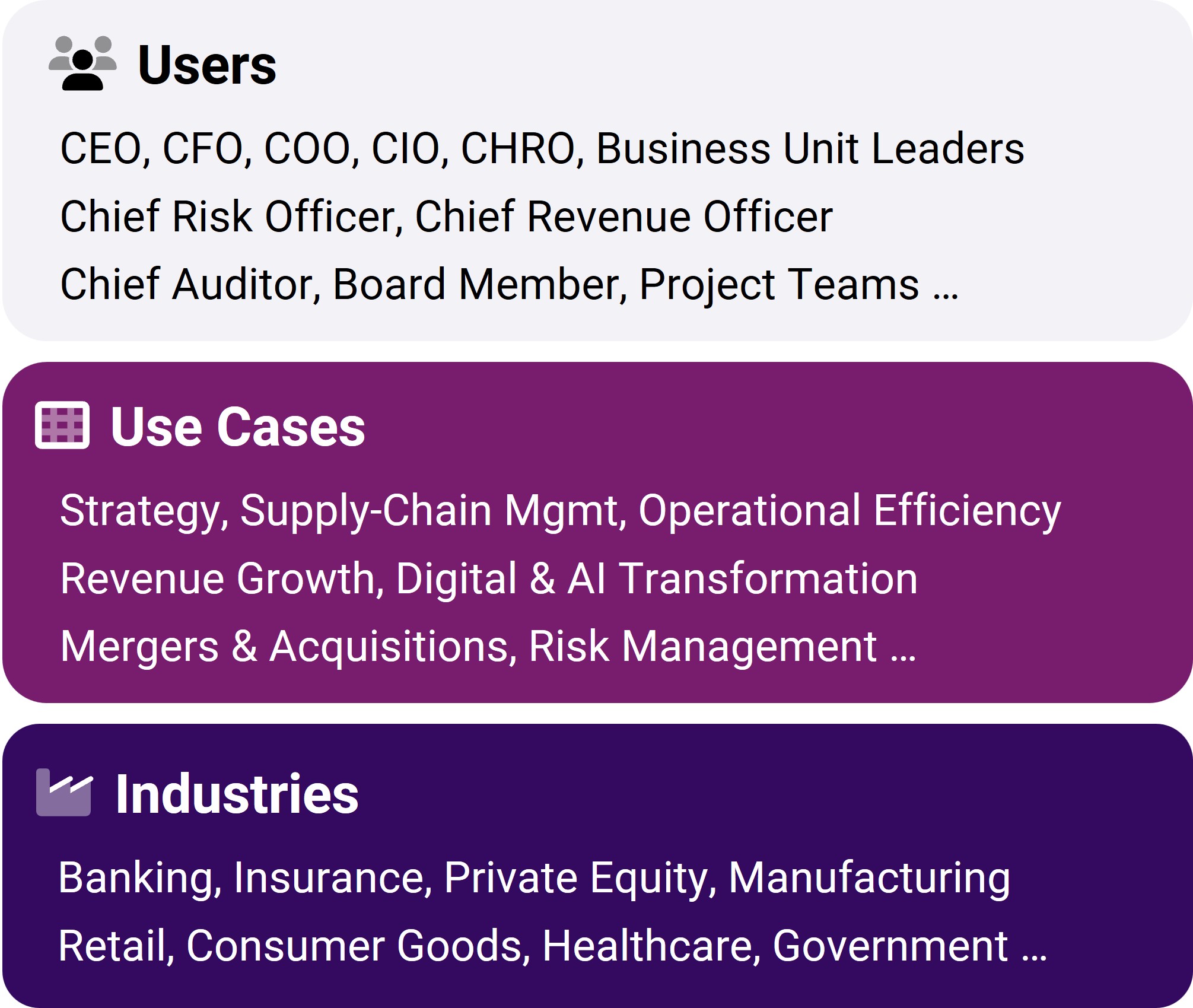
Empower your management team with the facts and insights needed to make decisions with confidence in a volatile, complex, and fast-moving environment.
The Goal: To Create an Information Advantage
Organize and connect your unique data to unlock its value
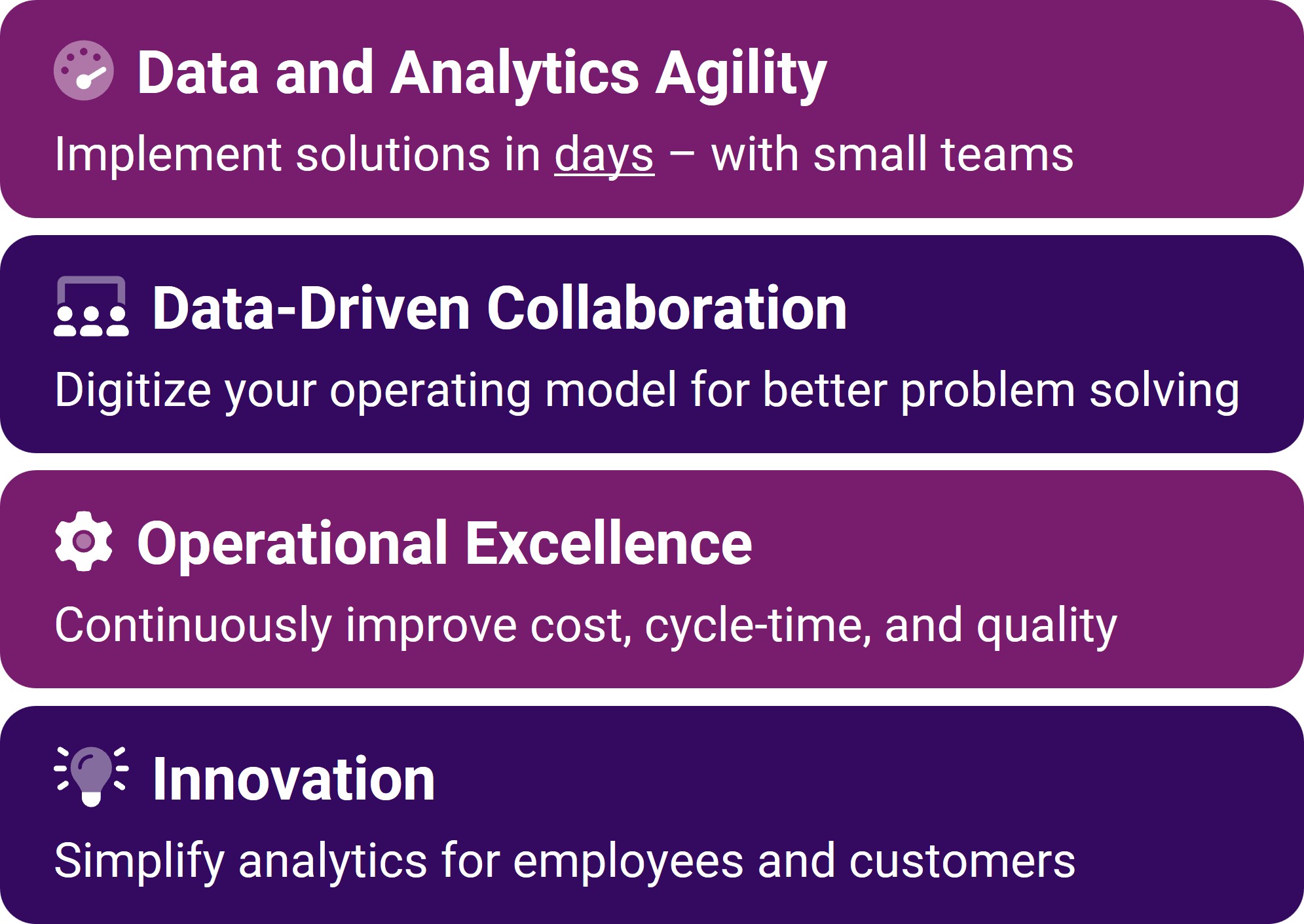
Step #1 – Select a Solution from the Library
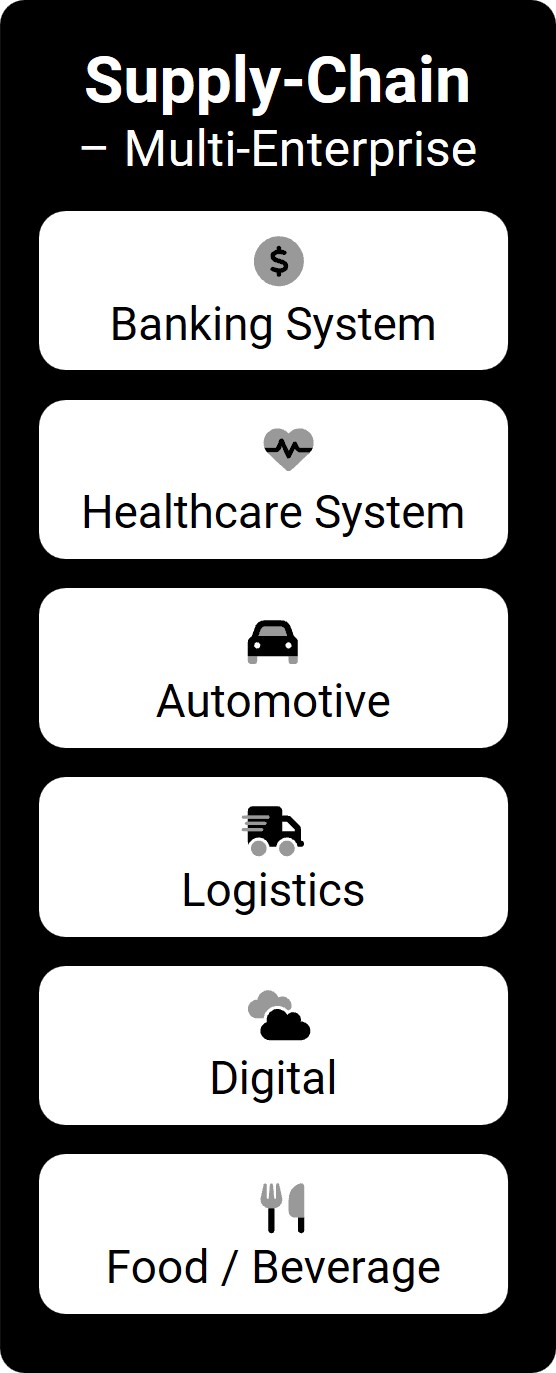
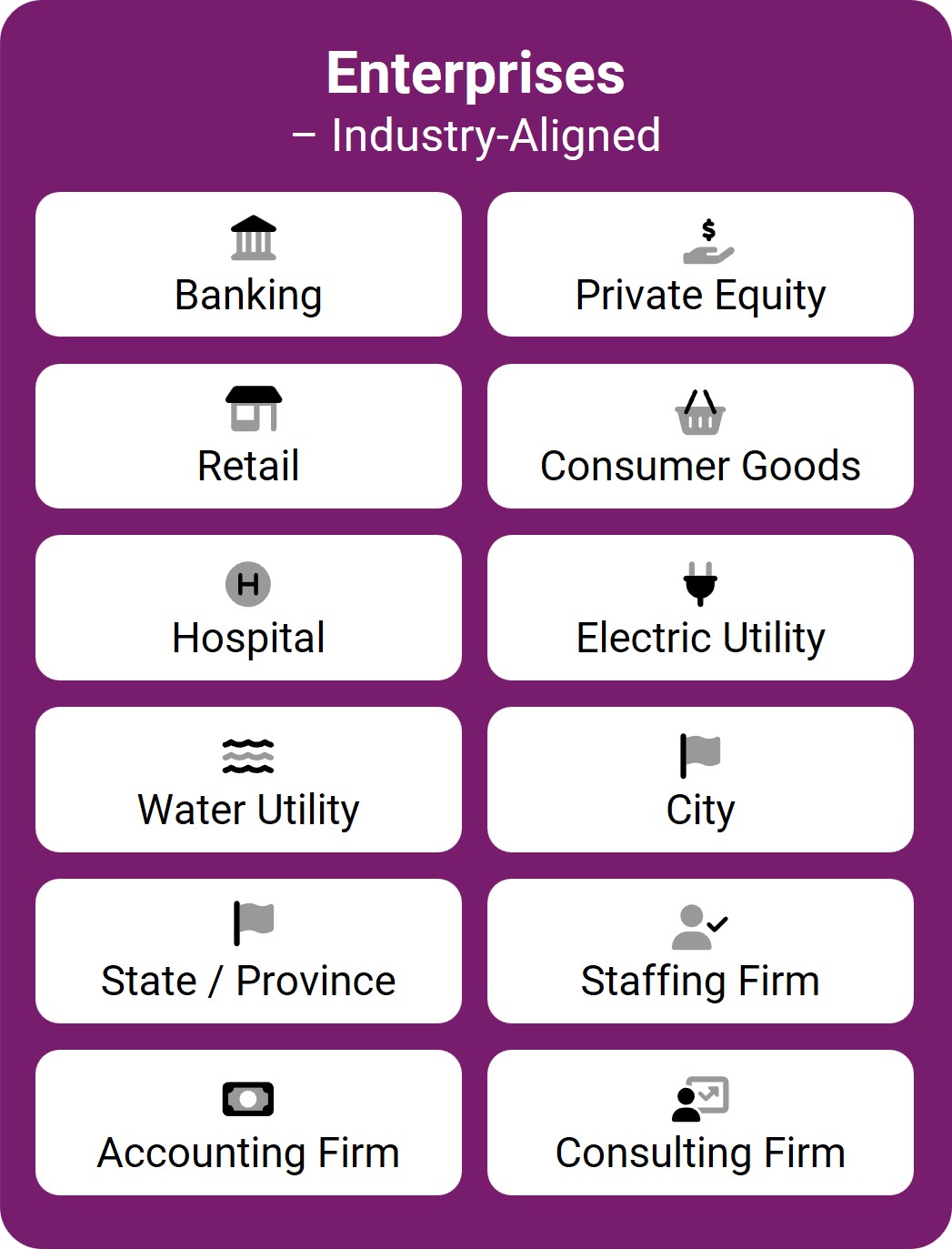
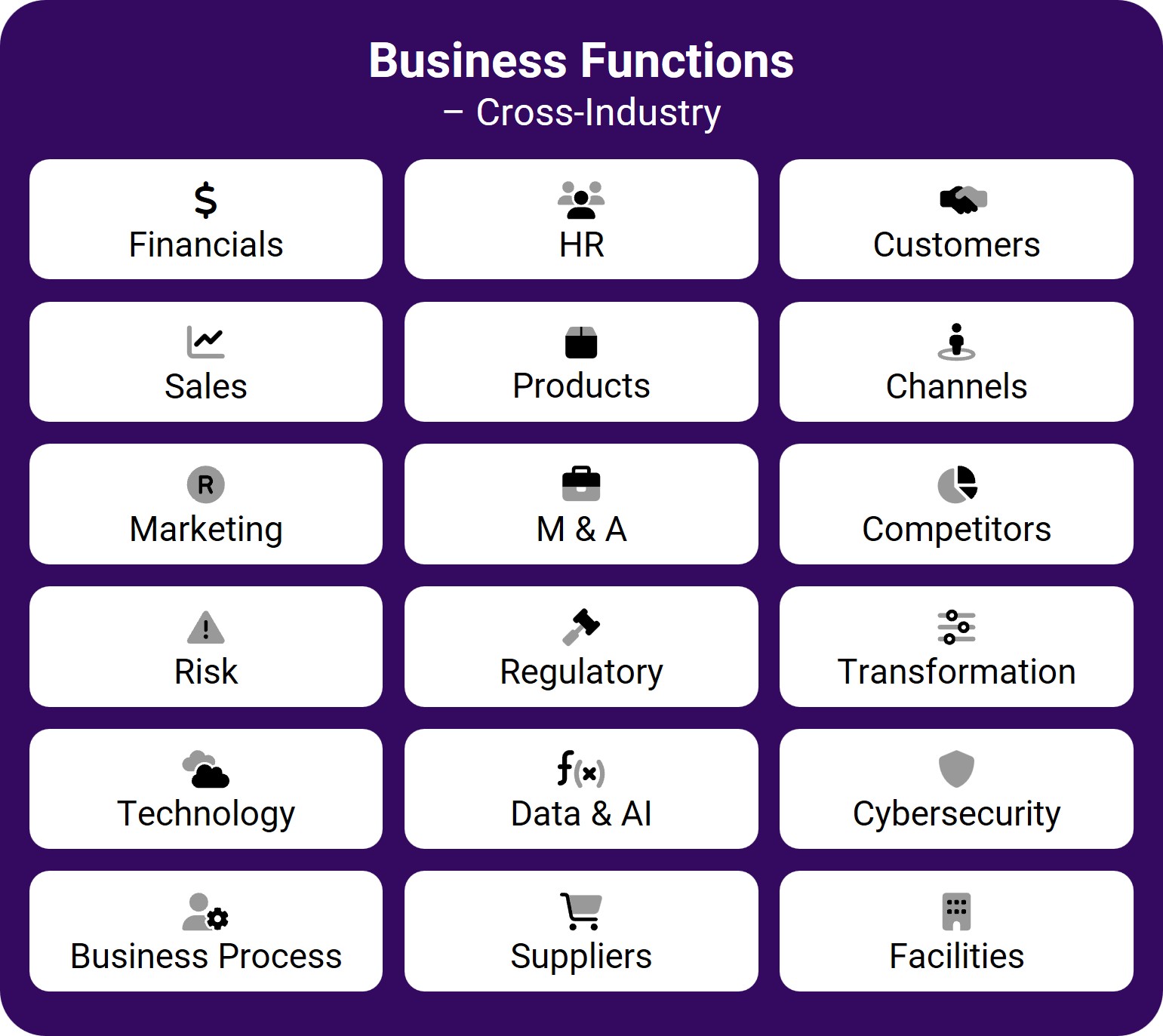
Step #2 – Load your Data – The Data Mesh is Built Automatically
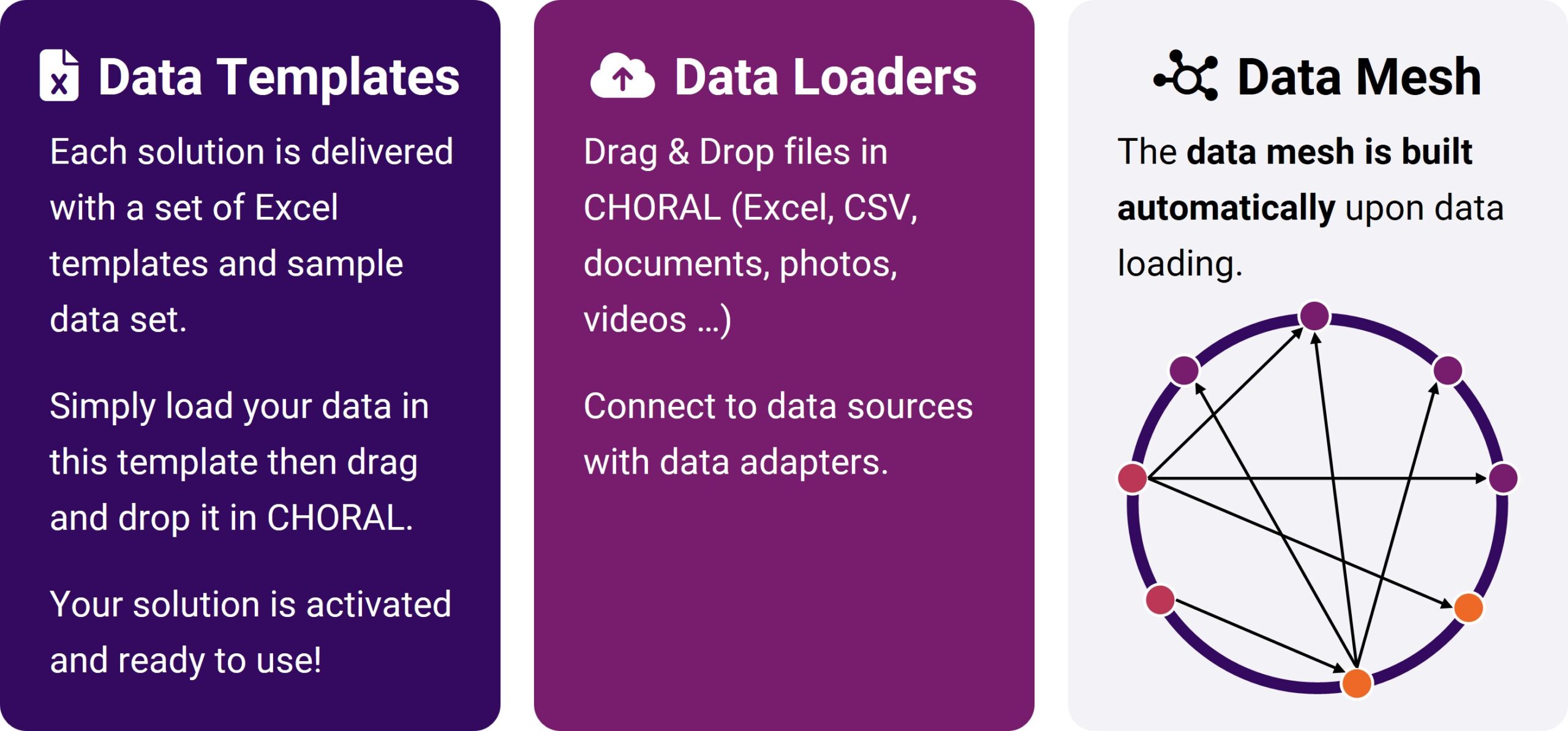
Transform Excel files into analytics solutions – Instantly. Then automate data loading with adapters.
The Data Mesh is a Logical and Physical Data Model
Example
Let’s say your company must optimize HR costs and supplier spend. The simple data mesh below would help you answer several key questions to achieve these goals:
- What are employee costs:
- By organization unit?
- By job family?
- By grade level?
- By location?
- By individual?
- What is our total supplier spending:
- By organization unit?
- By spend category?
- By supplier?
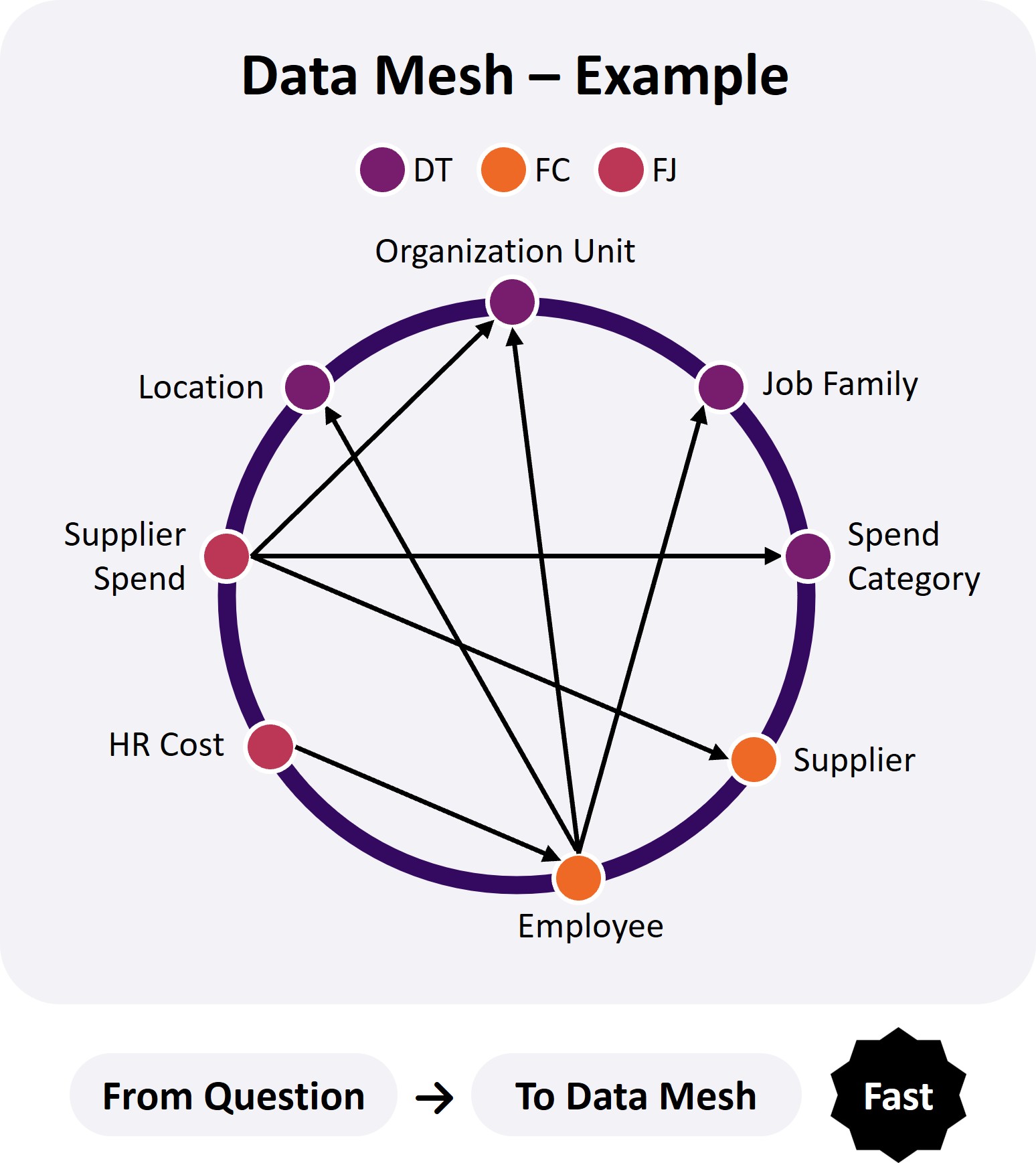
The Data Mesh is Extensible.
Therefore, teams can start small and scale fast – answering the most basic questions, then extend the mesh, views and analytics to answer additional questions. For example:
- What about contractors and global resources?
- What is our employee cost by business process?
- Can we digitize these processes?
- Can we us AI to streamline this work?
- What is our supplier risk?
- How do we mitigate this risk?
- Which supplier agreements are up for renewal?
- What are potential savings “quick wins”?
- More …
The Data Mesh is Divided by Domain
As you activate solutions, the Data Mesh expands in scope with more tables and relationships. Tables are assigned to a domain team and are governed by experts in the given field.
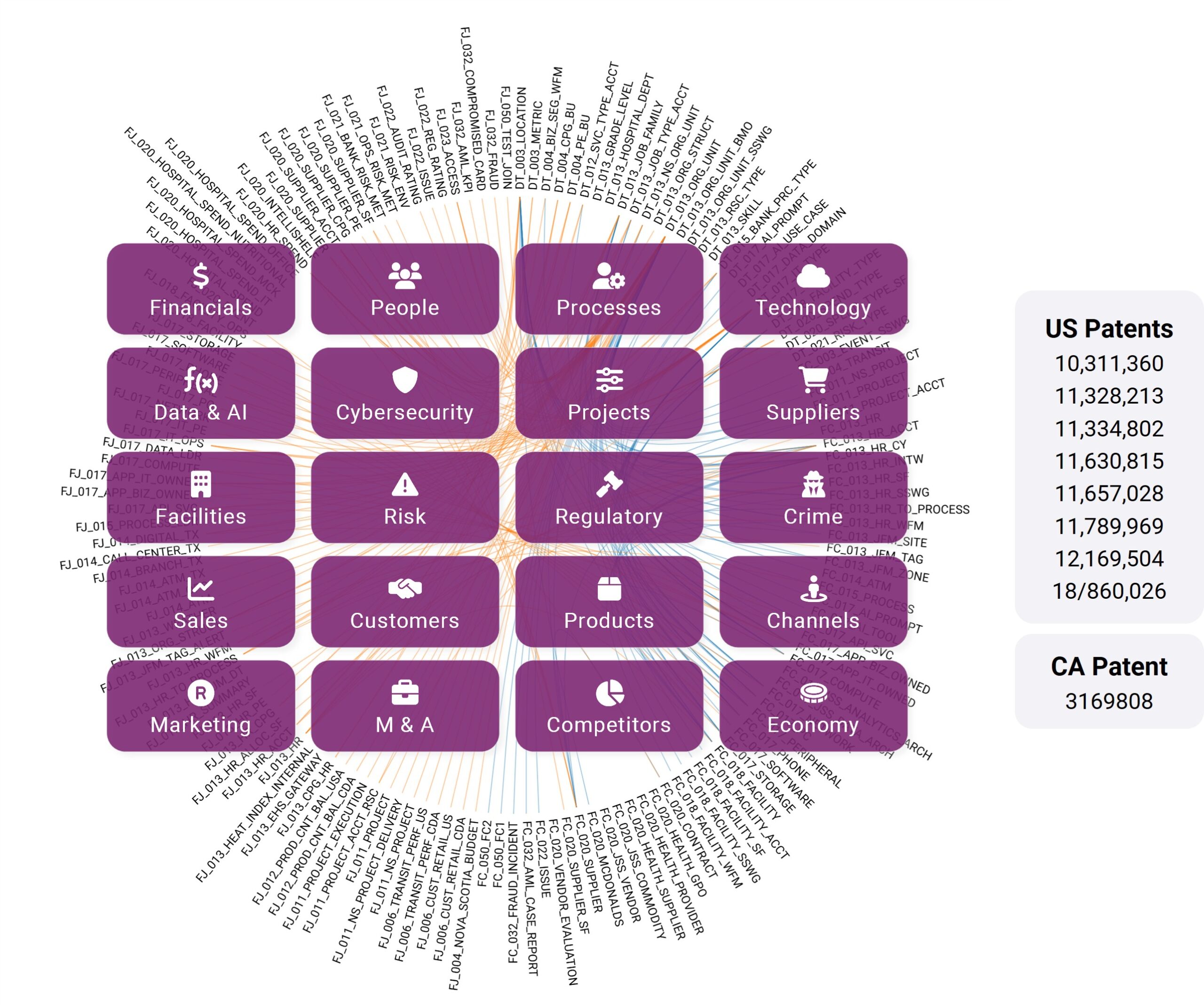
The Data Mesh is Built with 3 Types of Tables
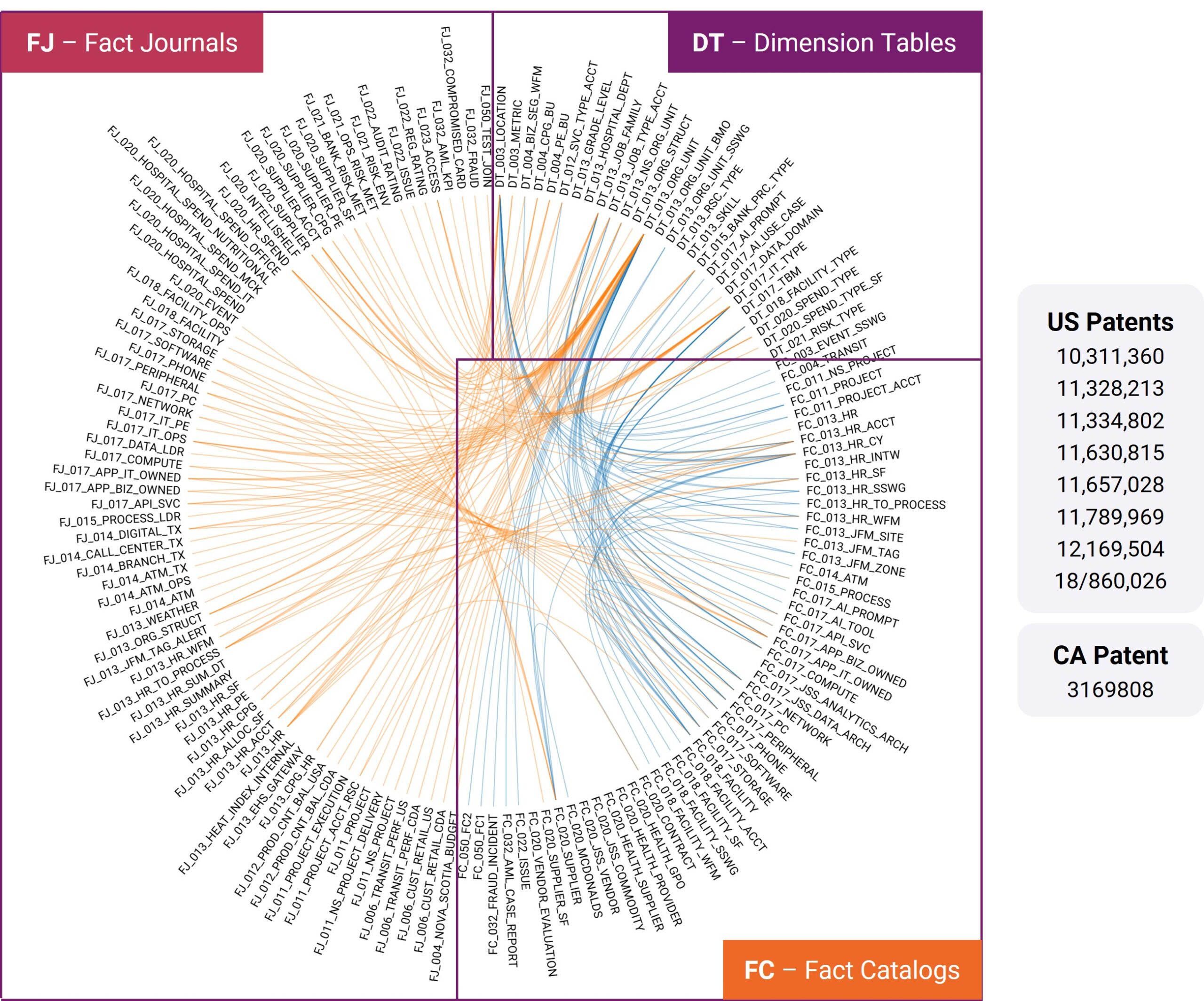
Step #3 – Analyze your Enterprise
Solutions combine high value financial and operational data with codified management techniques.
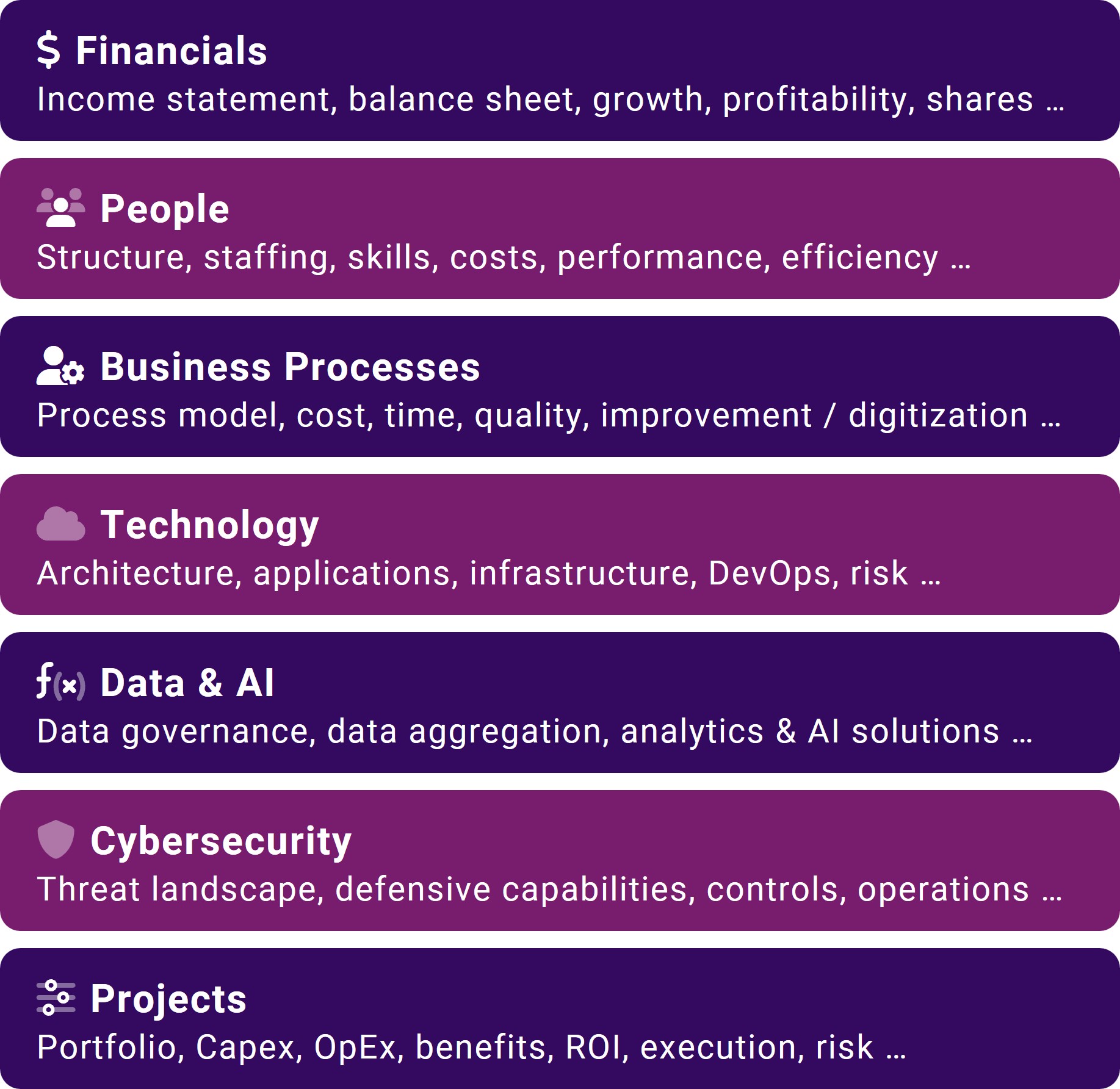
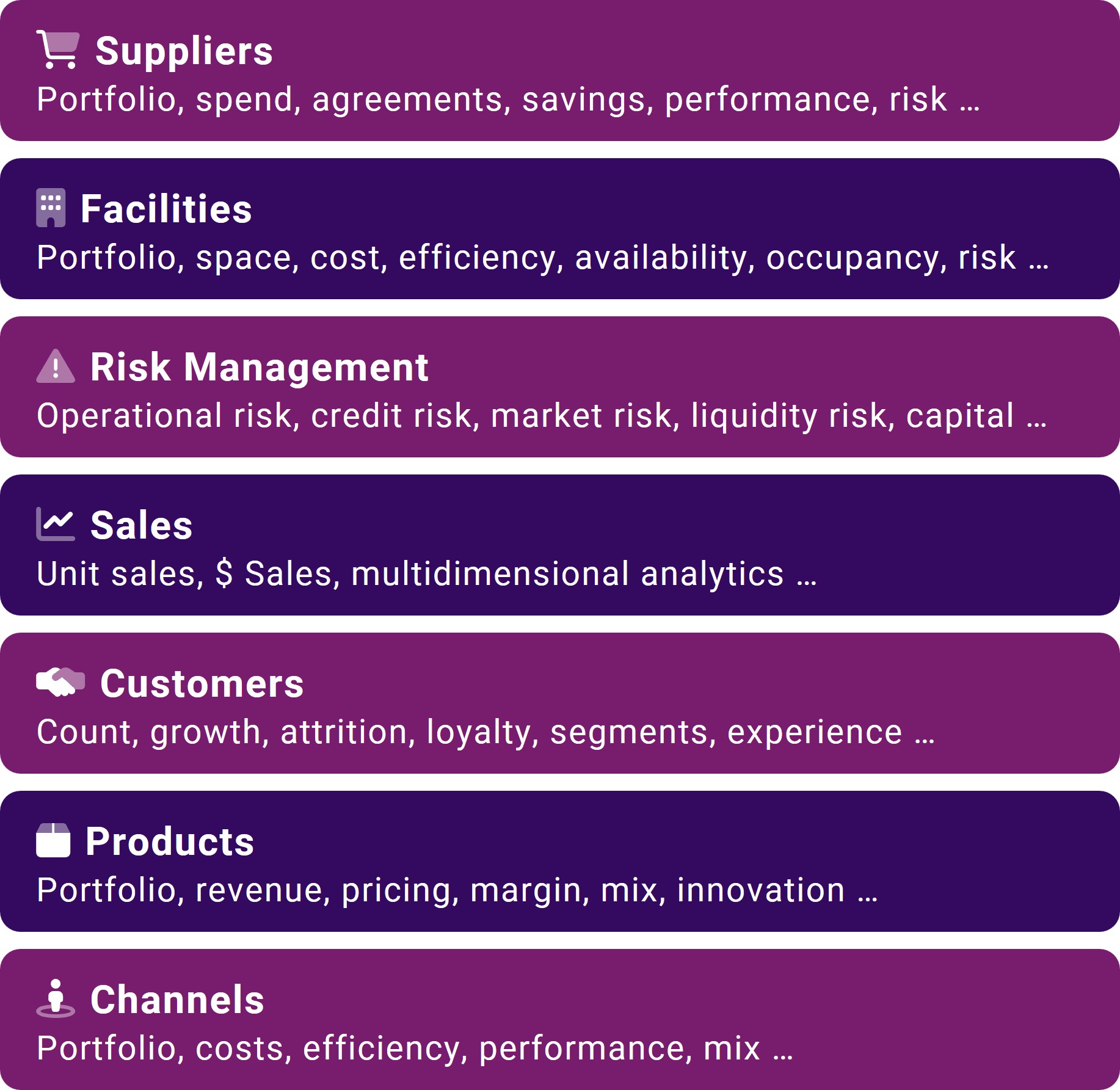
Step #4 – Extend
Analytics solutions and the data mesh may be rapidly extended with intuitive authoring tools

Achieving Faster Time to Value – Solutions are Implemented in Days

The rapid implementation method streamlines the most time consuming and costly steps in building analytics solutions:
REQUIREMENTS DEFINITION
Analytics solutions are pre-built. Select a solution and adapt it to your needs.
DATA MODELING
Each solution is delivered with a pre-built data model, and sample data sets in Excel templates. Simply load your data in these templates, drag & drop in CHORAL to activate solutions. The data mesh is built automatically.
SOLUTION DEVELOPMENT
Solutions may be rapidly adapted to client-specific needs with configuration files and intuitive authoring tools.
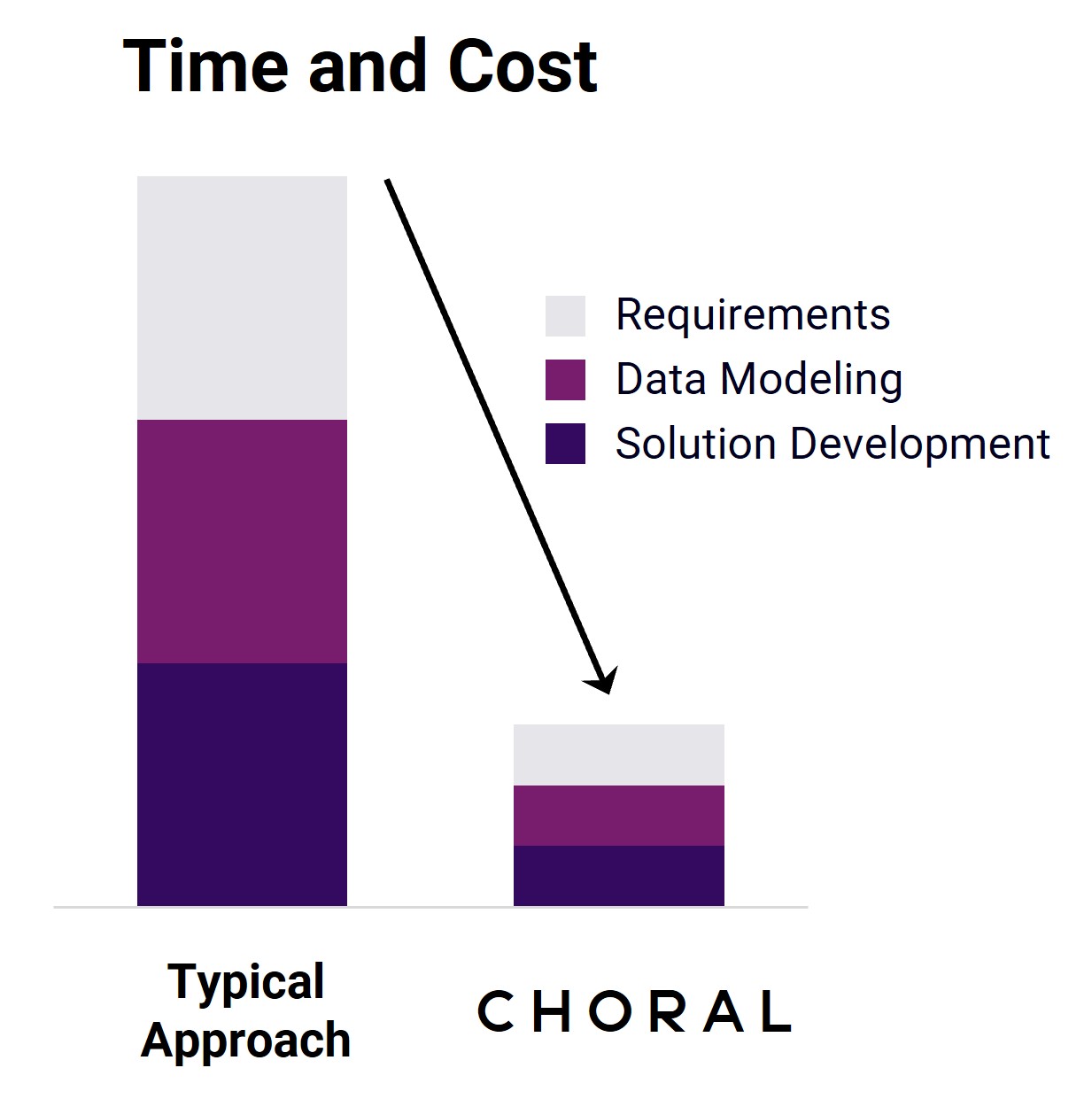
Focusing on High Value Data
Not all data is of the same value. Focus on your high value data and organized it to make it useful.
What is high value data?
- The data that is used weekly by management to run your company
- This is a small subset of your company’s data
- This data is typically fragmented and resides in:
- Files, for example Excel, documents, photos, videos
- Multiple systems such as data lakes, financials, HR, risk, regulatory, CRM, sales, product, marketing, IT, cyber, and projects
Why is it important to organize your high value data?
- To run your company with insights at your fingertips
- To improve big data
- To plan and execute your AI transformation
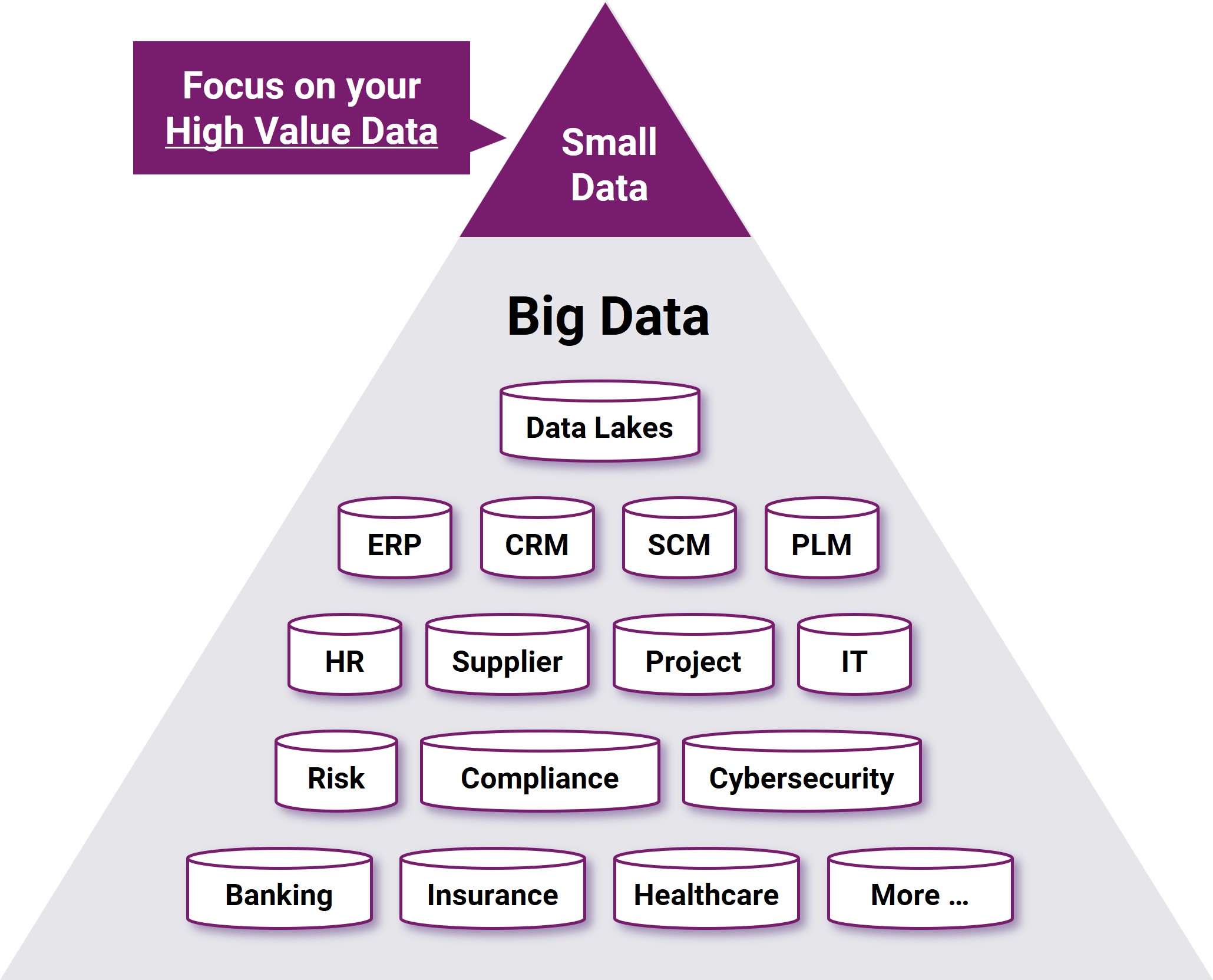
Mastering Small Data
Problem Statement
Many enterprises continue to struggle with small data.
Mastering small data is important for 3 reasons:
- To run your company with insights at your fingertips
- To improve big data
- To plan and execute your AI transformation
Without a solid foundation in small data, building the correct big data sets is difficult and often inefficient.
Without the right big data sets, enterprise AI is not effective.
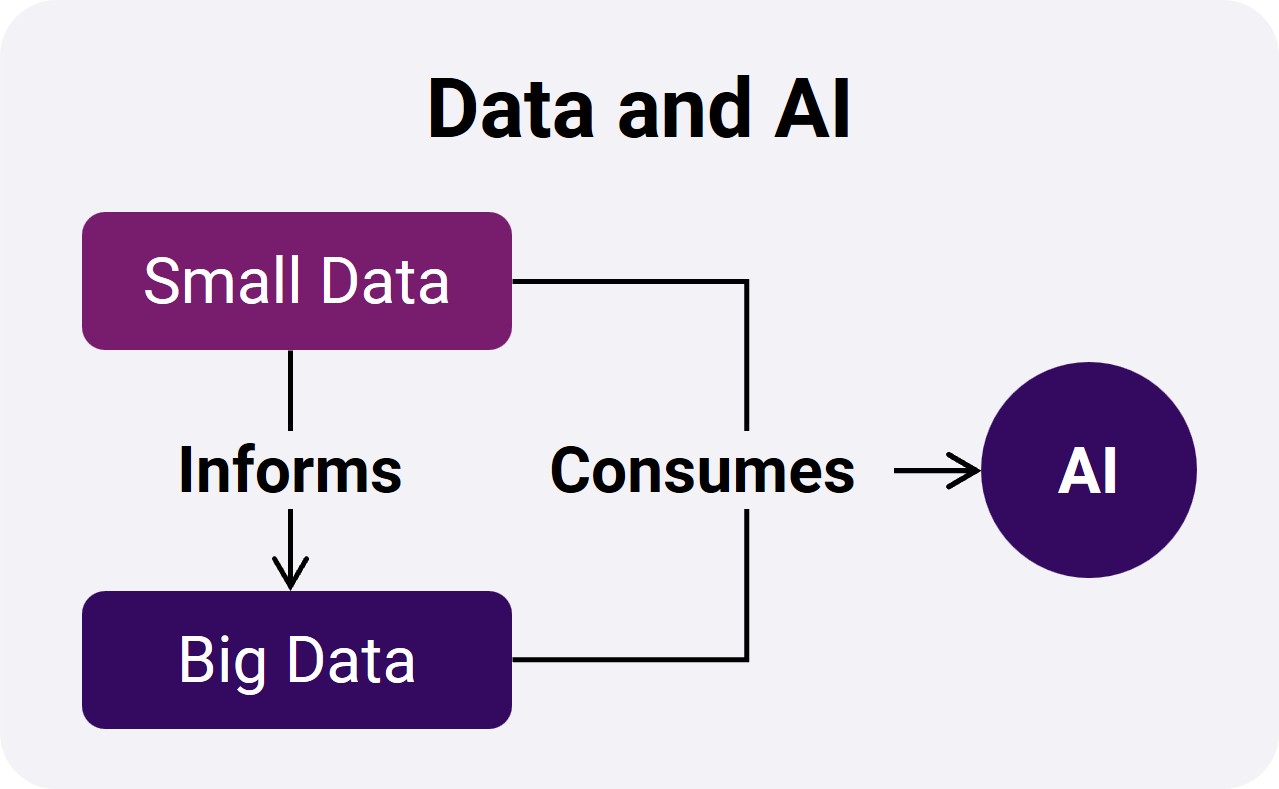
Method to Improve Small Data
Integrate your high value data and analytics in ONE application
The result is improvements in both:
- Management Effectiveness – Leaders and teams manage more effectively with an integrated view of the enterprise and analytics to solve complex problems at their fingertips
- Data, Analytics, and AI Effectiveness – Business and data science teams collaborate more effectively to answer questions such as: Which solutions do we build? In what sequence? What is the business value? What are the risks? Which data is needed? Which data needs to be improved? The result: sharper focus, better execution and greater business value.
Method to Improve Big Data
- Use pre-built analytics solutions to determine which data should be aggregated and curated
- Build high-value data pipelines and add data (tables and columns) in phases, based on business value
Creating a Bridge Between Business and Data Science Teams
CHORAL is an intuitive language that creates a bridge between business and data science teams − A “Rosetta Stone” to unlock how business and data science teams work together. It consists of:
- Analytics solutions codifying management techniques including frameworks, metrics, analytics dimensions, and problem-solving methods
- A logical data model which is easy to understand
- A physical data model for implementation
- Excel configuration files and data sets
- A step-by-step implementation method enabling non-data experts to activate solutions quickly
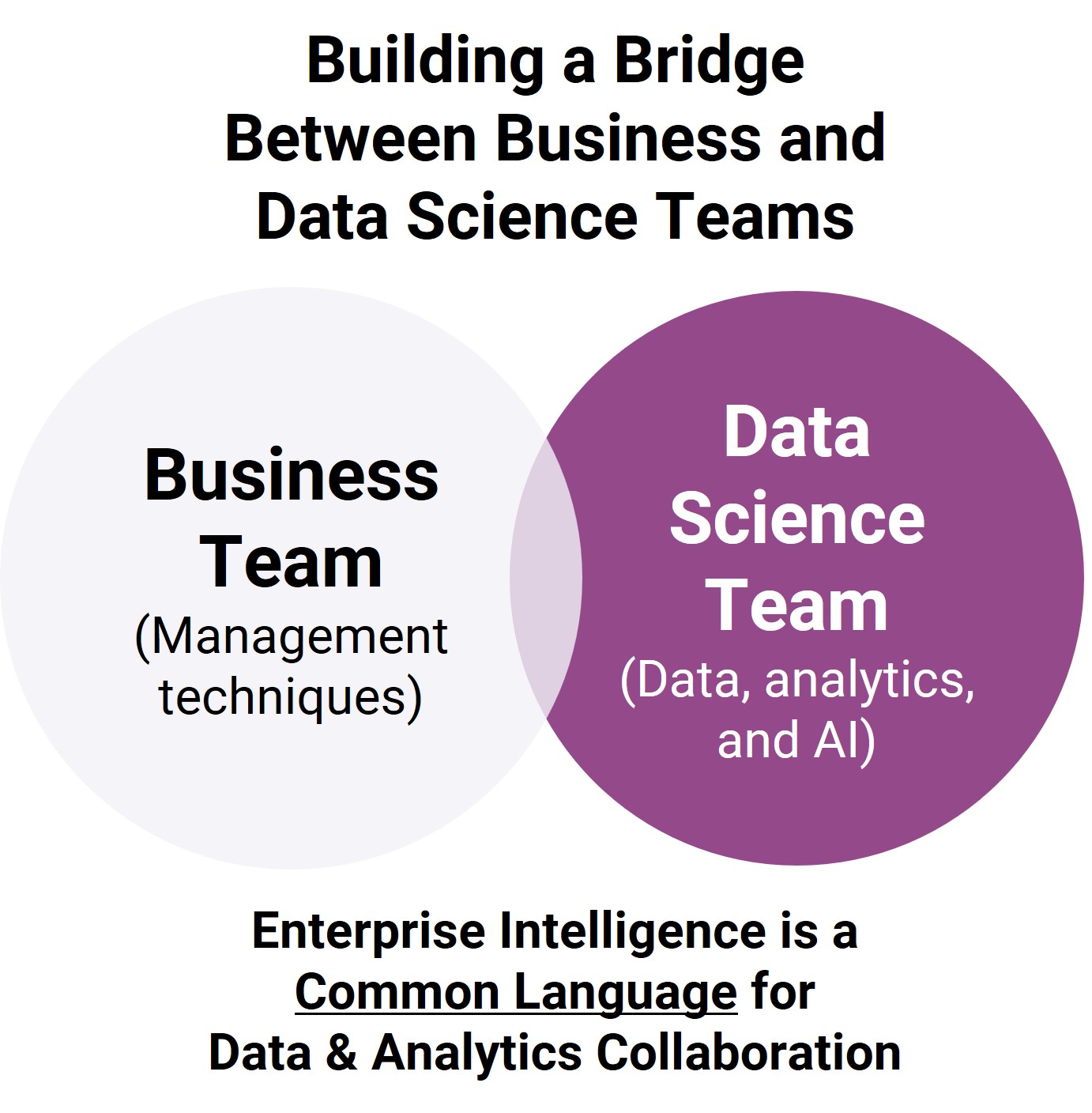
Building the AI-Driven Enterprise
Build a clear AI transformation strategy. Monitor the effectiveness and risk of AI solutions.
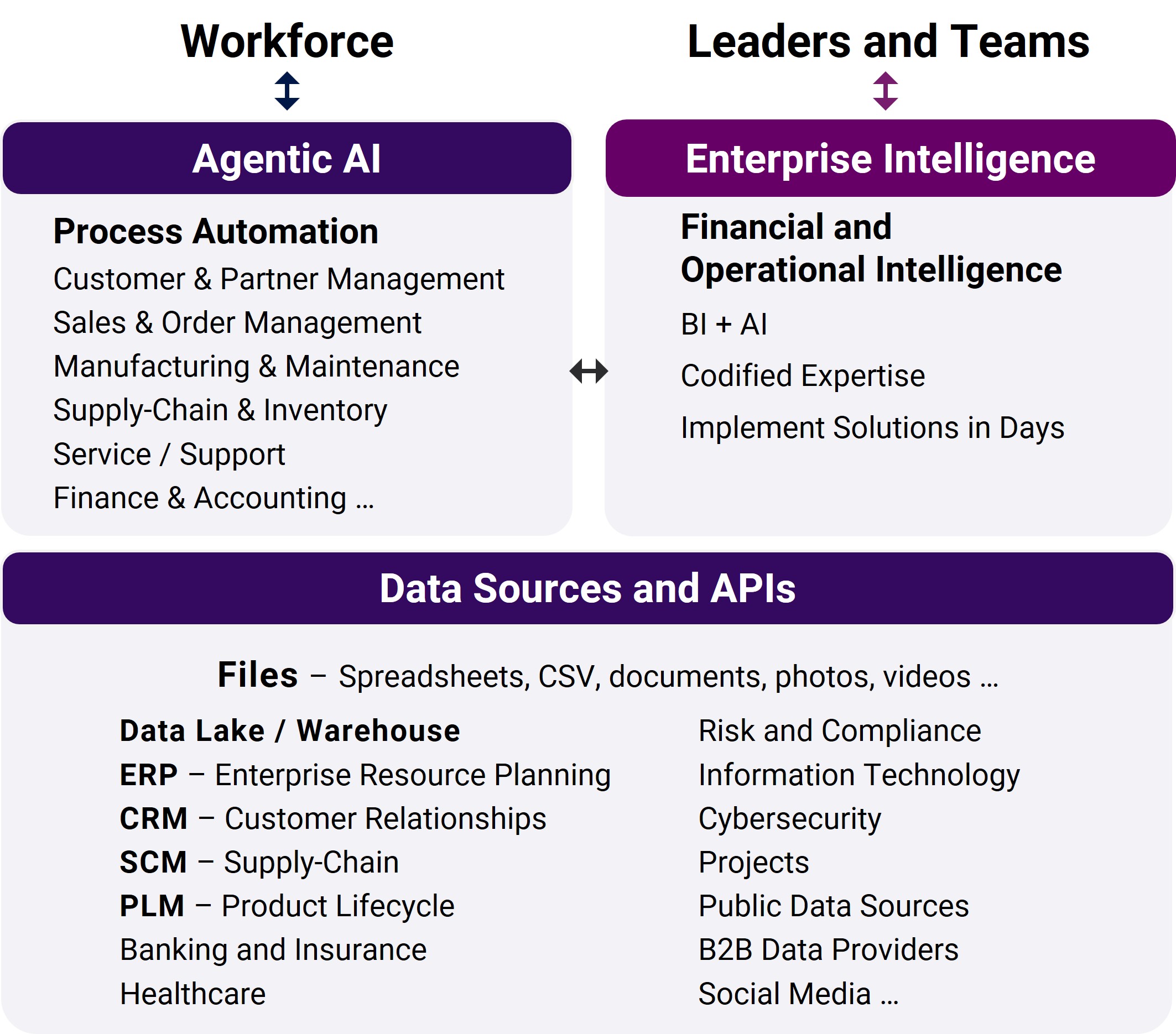
A Next Gen Data and Analytics Architecture
Enterprise Intelligence is an integrated data & analytics stack together with pre-built analytics solutions and data models. The impact: greater speed, efficiency and insights



